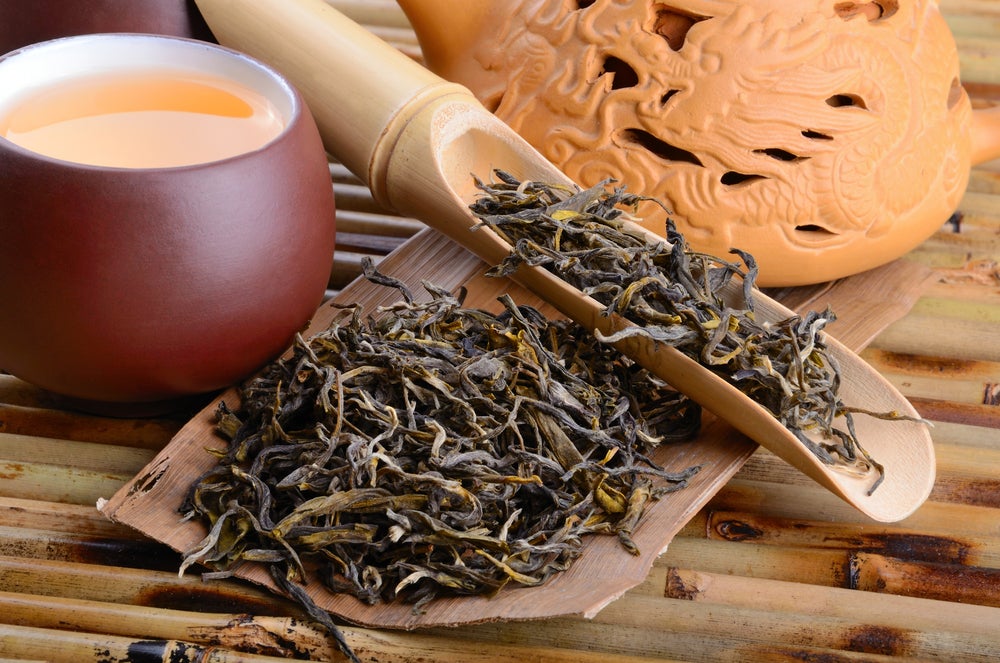
You’ve tried the rest, now taste the black dragon.
Green tea you know. Black tea you know. But maybe you don’t know much about oolong tea, a favorite of many Chinese tea drinkers that doesn’t even have much of an English translation. The name “oolong”—technically wu-long, if you follow the Chinese pronunciation—means “black dragon,” a reference to the long, twisted shapes of the original oolong tea leaves. Just like green and black tea, oolong comes from the Camellia sinensis plant, and while there are lots of special cultivars used specifically for oolong styles, the main distinction is how the fresh leaves are processed after picking.
Green teas are heat-treated just a few hours after picking to halt the enzymatic process of oxidation and keep them, well, green and vegetal. Black tea leaves are withered in open air and rolled until the leaves have completely oxidized, which develops the tea’s unique malty flavors. Oolong leaf processing is a lot more complex: the leaves are withered, bruised, kneaded, and rolled in precise ways to coax out specific flavors and aromas, from ripe peaches to jasmine flowers to creamy buttered scones.
The leaves are then heat-treated part-way through their total oxidation process, and they may be roasted afterward to manipulate their flavor even more. If green teas are all about capturing fresh taste and black teas are about the slow development of rich flavors you get in a long-braised one-pot dish, oolong teas are sophisticated cheffy meals—complex and distinctive, with flavors you never thought you’d get from a leaf. Because they’re packed with so much going on, you can usually re-steep these leaves several times before they start to fade. Black dragons are nifty like that.